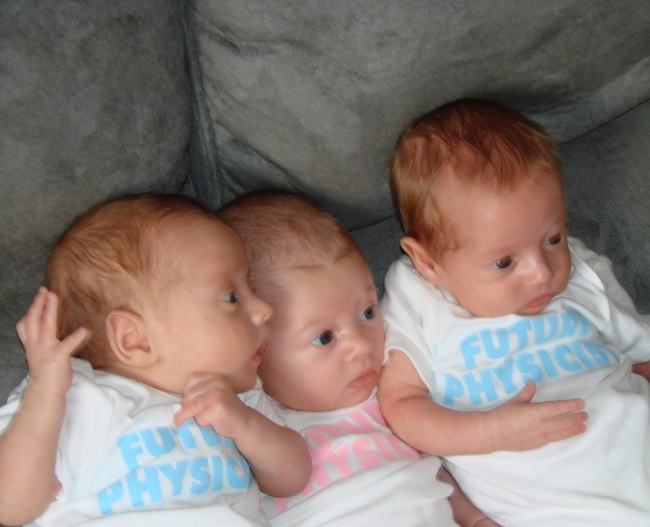This is my last full day in Uppsala, a chance to finish out the workshop and then pound the pavement looking at museums, parks, and palaces. This has been an extraordinary trip, both in terms of the wonder of Sweden and the breadth of physics covered at this workshop.
My great revelation at this workshop has been the real complexity of searching for something as critical as an electrically charged Higgs boson. Such a particle – spinless, colorless, and electrically charged – can not be accomodated by the Standard Model. Like neutrino mass, the existence of such a particle implies that the universe has a rich mass structure that is too complex to be described by the rather simple symmetry breaking invoked to produce the standard neutral Higgs. However, while such a particle couples to rather beautiful Standard Model final state like a tau neutrino and a tau lepton (below the mass of the top quark), or a top and a bottom quark (above the mass of the top quark), the difficulty in finding such signal at the LHC above a large and seemingly impenetrable Standard Model background is daunting. The phenomenological studies, which can tell you in more ideal conditions whether searching for the charged Higgs is even feasible, all need to be repeated with the full background simulation, and complete trigger and detector simulations. Only then will there be a full appreciation of the reality of such searches, but even that needs to finally be judged when real LHC data arrives.
One thing which has come out of all this discussion is that there is a certain neglect of supersymmetry in all the proposed Higgs searches. A charged Higgs boson may be indicative of an underlying supersymmetry in nature, one which effectively doubles the number of matter particles in nature. This isn’t a necessary condition, but if true it would mean that the Higgs might also couple to these other particles. That would suggest that either the Standard Model signatures – tau nu and top-bottom – are heavily suppressed or that at the very least one needs to consider searching for superparticle decays into detectable final states. In addition, there was enthusiasm in searching for the decay H+ → W+ H0, but it seems that this channel is plagued by Standard Model background even more than tau-nu or top-bottom.
Before heading to the morning session yesterday, I went to the mass at the Domkyrkan, the large church across the street from the Gustavianum. Never in my life have I been in a church so large, nor sat through something like a mass in such a structure. The attendance was very small – the number of benches in this church left empty made the structure feel somewhat hollow (I could picture what it might have looked like full, a truly awe-inspiring sight). However, the mass – in Swedish and Latin – echoed through the cavernous sanctuary. I was deeply moved by the moment, touched by a sense that those who constructed this place understood how to make a single person sitting in its midst feel moved by the size of the experience. The science writer Tim Ferris once compared cathedrals to particle accelerators – huge expenditures, made by nations in an attempt to come closer to the origin of the universe. A physicist sitting inside such a structure can only feel properly dwarfed by the overwhelming size of such a universe.
Last night, we had our workshop dinner. There was a brief education by Tord Ekelof on Swedish dining customs, primarily on the group consumption of the schnapps. These flavored ethanols are to be consumed by all diners together, after singing a song. The Swedes did the non-Swedes the favor of singing, and we all drank and laughed. There were some speeches, largely in congratulations to the organizers for such a wonderful workshop. Finally, the last speech given pointed out that the restaurant had once been the student prison at the university. Yes, that’s right: a student prison, where those students punished by the school were sent (to rooms with “Swedish curtains” – bars – on the windows). We were told that we were sentenced to this prisons because the Gustavianum internet had been suspicious that a great number of short connections were made from a single IP address to CERN, SLAC, FNAL, and universities. This was why our wireless was shutdown yesterday – they didn’t know all these physicists were just trying to do work! Great fun.


